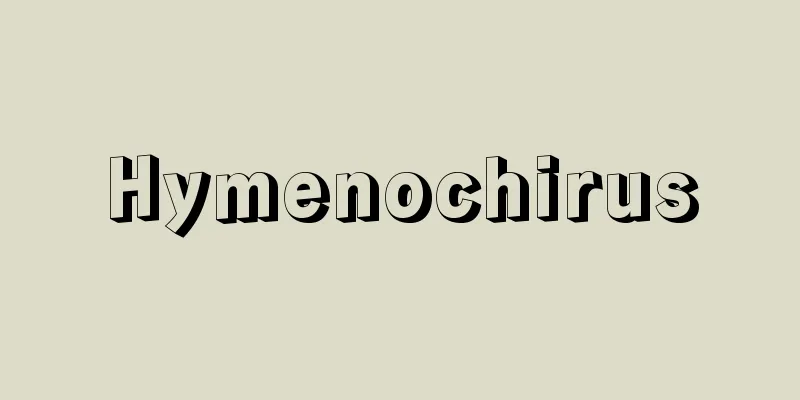Chinese cuisine - Chinese cuisine

|
China is a large country with thousands of years of history, vast land area, and a population of 1 billion. Moreover, the plains of the southeastern part of the country facing the sea are home to large rivers such as the Yellow River and the Yangtze River, and the basins of these rivers are wide plains that are rich in agricultural and marine products. The interior of the country has desert areas and mountainous areas, and the people are also very diverse. 94% of the population is Han Chinese, and there are more than 50 minority groups, including the Manchu, Mongolian, and Hui. The Han people have an ancient and highly advanced culture, and their diet, which aims to achieve immortality and longevity, was already made as a variety of dishes during the Han period, as shown by murals and excavated items from ancient tombs at that time. It is written in the Qi Min Yaoshu that the custom of eating raw fish and shellfish has existed since ancient times in the seaside regions, but it is said that the custom of eating raw fish and shellfish almost disappeared after nomadic people gained power in the 13th century and the Yuan period began. In the plains where vegetables are plentiful, people have studied how to eat them, and in desert and mountainous regions where the heat and cold are severe, diets suited to each region have been researched through years of experience, including medical treatment through cooking. Even today, Chinese cuisine has developed into its own unique regional cuisine, named after the region, without losing its original form, and today Chinese cuisine is loved by people all over the world. [Nomura Machiyo] Classification of representative dishes and their characteristics(1) Beijing cuisine This is regional cuisine centered around Beijing and Tianjin, and developed as high-class cuisine known as imperial cuisine during the heyday of the Qing dynasty. Beijing is inland and has a cold climate, so the food is generally salty and rich, and fried, stir-fried, and grilled dishes are excellent. In addition, because rice production is low, there are many flour-based foods such as mantou (buns) and noodles made from wheat. (2) Nanjing cuisine Nanjing is an ancient capital, and just as Beijing is representative of northern cuisine, Nanjing cuisine is representative of central China cuisine. The plains around Nanjing and the lower reaches of the Yangtze River are one of China's leading rice-producing regions, so people eat a lot of rice and there are many dishes that use rice as an ingredient. Shanghai is close to Nanjing and faces the sea, and the area is rich in lakes and marshes, so it is well-known for its many dishes that use seafood, such as crabs, shrimp, and waterfowl, and some people therefore consider "Shanghai cuisine" to be representative of this region. (3) Cantonese cuisine This is a typical cuisine of southern China. Because Cantonese is a hot region, the taste is relatively light, and because it is close to the sea, there are many dishes using seafood such as fish, shrimp, and crab, and one of its characteristics is the large number of soup dishes. Cantonese cuisine is currently inherited in Hong Kong. The Fujian region is located on the coast between Shanghai and Cantonese, and is famous for its delicate flavors and rich colors. It is said that "food is in Guangzhou," and Guangzhou considers itself the home of delicious food, but it is also famous for its dishes using so-called grotesque things such as snakes, dogs, and raccoon dogs. There are many interesting researches on snake dishes, such as using two poisonous snakes and three non-poisonous snakes in a ratio of two poisonous snakes to three non-poisonous snakes, putting the snake bile in white wine (baijiu) and eating the snake dishes while drinking the beautiful green wine, or using the left hand of a bear to store nectar during hibernation. (4) Sichuan cuisine This is cuisine from mountainous regions such as Yunnan and Sichuan. It is simple and traditional, with a lot of spices such as garlic, chili peppers, and ginger. Because it is located in a remote area, food preservation methods have been studied and cooking methods have been well developed. Vegetable dishes are distinctive. It is particularly famous as a producer of bamboo shoots and silver ears, and the cuisine is excellent, with pickles well developed. In addition to the above, there are many other unique regional dishes in China, such as Hui cuisine, which does not use pork at all and has developed lamb dishes, for ethnic, living environment, customs, religion, and other reasons. [Nomura Machiyo] Chinese cuisine in JapanWhen Buddhism was introduced to Japan in the 6th century, Chinese cuisine was also brought there by Buddhist monks. As a result, most of the cuisine was vegetarian, with strict precepts. In other words, exchanges between the Japanese and Chinese began with monks, and many Chinese foods and cooking methods were introduced by these monks, with most being vegetarian, including fucha cuisine. During the Edo period, exchanges with China became more frequent, and Chinese prepared food was introduced in Nagasaki, resulting in shippoku cuisine, but this was not common. In the Meiji period, Chinese restaurants opened in the ports of Kobe and Yokohama, but the customers were almost all Chinese. At the end of the Meiji era, a Chinese restaurant opened in Hibiya, Tokyo, but it was not aimed at the general public, and it was only after the Great Kanto Earthquake in 1923 that popular Chinese restaurants offering local specialities and a la carte dishes from all over China began to appear here and there. After the Second World War, it developed rapidly and is now also called Chinese cuisine, and is widely used in Japanese homes. As exchanges with other countries around the world become more active, and due to China's national conditions, the unique characteristics of each region's cuisine are gradually being lost and the cuisine is becoming more standardized. [Nomura Machiyo] Classification by cooking methodChina is a country of letters and therefore has strict rules about how to use them, and many of the names of dishes clearly describe the ingredients, how they are cut, and how they are cooked, so it is necessary to know these. [1] Chao cai (fried vegetables) is a dish that is stir-fried using a small amount of oil. It can be made using only a wok (pan) and an iron spatula (tie chang), and is the most commonly made daily dish (homemade dishes (chao cai)). Its characteristics are that it can be made quickly and easily, and vegetables are often stir-fried raw without boiling, giving it a beautiful green color and high nutritional efficiency. Originally, vegetable oil (su yu) was used when the ingredients were animal-based, and animal oil (fen yu) was used when the ingredients were plant-based, but soybean oil, rapeseed oil, peanut oil, etc. are commonly used. Examples include stir-fried Chinese cabbage (chao pai tsai) and stir-fried diced chicken (chao qi ting). [2] Cha cai (fried vegetables): Deep-fried dishes. Along with chao cai, this is a typical cooking method in Chinese cuisine. (1) Qing cha (clear fried vegetables): Deep-fried without a batter. For example, Yin cha zi yui (fried dried fish pickled in vinegar). (2) Kan cha (dry fried vegetables): Deep-fried with dry flour. For example, Kan cha son li yui (fried carp) and Cha chi zi (fried chicken). (3) Luo wang cha (soft fried vegetables): Deep-fried with a batter. For example, Luo wang cha xian yui (fried fresh fish) (fish tempura). (4) Fried Goryeo (fried vegetables): Goryeo means white, so this refers to fried white fish. For example, Fried Goryeo silver fish (fried white icefish). [3] Steamed vegetables (Chongcai) This is a steamed dish made in a Chinese-style steamer (Chongrong). The characteristic of this steamer is that it transfers heat quickly, keeps its shape, and reduces nutritional loss. Examples include steamed glutinous rice beef balls (Chongnuomi niu rou wanzi) (beef balls steamed with glutinous rice) and steamed egg huanghua (steamed eggs). [4] Liu Tsai (fried vegetables) - a thickened dish consisting of fried vegetables (chao tsai), fried vegetables (chia tsai) and steamed vegetables (chon tsai). The thickened sauce brings out the flavor, improves the texture and keeps the temperature in check. There are the following types of thickening sauce: (1) Tangzi Liu Chang (sweet and sour thickening sauce): a sweet and sour thickening sauce. For example, Tangzi Liu Wanzi (meatballs with sweet and sour thickening sauce) and Ku Lu Rou (sweet and sour pork). (2) Liu Chang (spicy sauce): a thickening sauce without vinegar. For example, Liu Nan Guo (pumpkin with thickened thickening sauce). (3) Poly (glass): a colorless and transparent thickening sauce. For example, Poly Tong Guo (steamed wax gourd with a thin thickening sauce). (4) Nailiu (milk thickening sauce): a thickening sauce with milk. (5) Xinglao (Xingluo): A sauce made with apricot kernel juice. For example, Xinglao Shachiu (Xinglao Shrimp Balls in Almond Sauce). (6) Fancie Chi (French Apricot Soup): A Western-style sauce made with tomato ketchup. For example, Fancie Chi Chi Ya Yui (Fried Fish with Tomato Ketchup). [5] Cai (Hoi Tsai): A dish made by stewing without oil and topping it with a thick sauce. For example, 'Chicken and shrimp in thick sauce'. [6] Wei Tsai (酨菜) A stewed dish. There are minor variations, such as toun (燉), men (燜), ao (熬), ao (绷), and ru (滷), but in most cases the ingredients are first stir-fried, deep-fried, or steamed, and then slowly stewed, making it a relatively high-class dish. Spices are often used. Examples include Dongpo pork (tenderly stewed pork) and Lu tsai (braised dish). [7] Fried food (Kao Tsai) Dishes grilled over an open flame, with some dishes being grilled in a special oven. Examples include roasted lamb (Kao Yang Rou) (Mongolian Genghis Khan grill), roasted duck (Kao Yatsi) (Beijing's famous duck grill), and roasted sweet potatoes (Kao Pai Siu). [8] Tang cai (soup) - Soup, equivalent to Japanese bowls of soup. The order in which tang cai are served in a menu is not fixed, but they are usually served with rice. However, if the best main ingredient of the banquet is used for the tang cai after the appetizers, it is served first. This has the special meaning of stimulating the appetite. There are the following types of tang cai: (1) Qingtang (clear soup). For example, Qingtang Yancai (bird's nest soup). (2) Naitan (milk soup). Cloudy soup, vegetable soup, soup with milk, etc. For example, yui xiu xiu naitan (corn milk soup). (3) Hui (collection). Soup with thin kuzu (thin kuzu). For example, hui si xian (collection of kuzu with various ingredients). (4) Kong: A thick sauce that is richer in both flavor and kudzu than Hui. For example, Fuyong Kong (Hibiscus soup with egg and kudzu). (5) Chowan: A banquet menu is not limited to one type of soup, and in large menus two or three types may be served. In such cases, the name of the dish is either Tan or Chuan. Although Chuan is not very different from Tang, it does mean a somewhat high-class soup. For example, Chuan San Xian (soup with three ingredients) and Chuan Bao Yui (soup with abalone). [9] Hotpot (Huokuo) Hotpot (Huokuo) is a Chinese special pot that combines a pot and a stove, and is filled with soup and cooked with delicacies from the mountains and the sea. It is popular from late autumn to early spring. Hotpot dishes have an unparalleled charm in that each person can freely season their favorite ingredients, cooked to their desired doneness, and seasoned with their favorite condiments, but the dish is generally cooked in a light soup. Condiments include ginger, garlic, chili oil, mustard paste, vinegar, and shrimp oil. Examples include Shijing hotpot (Shijing hotpot) and Hua yangrou (Shao yangrou). Hotpot dishes are sometimes served at the end of a meal, and the meal is sometimes completed with rice and pickled vegetables. Alternatively, the hot pot can be the centerpiece, followed by two or three appetizers and a staple food such as rice, steamed buns, or noodles, which can then be added to the hot pot at the end. [10] Xian cai (Salted cabbage) This refers to pickles, and salted vegetables are specifically called yen cai (醃菜). Vegetables are pickled in soy sauce, salt, miso, lees, rice bran, mustard, etc., and often with spices unique to China such as garlic and chili peppers. Sichuan Province is famous for this, and in this region, in addition to eating xian cai as it is, it is also used as an ingredient in various dishes such as tang cai and fried cai. [Nomura Machiyo] Commonly used materials and their handling[1] Pork The word meat (rou) often appears in Chinese cuisine, but it refers to pig meat; beef and sheep are always written as beef (niu rou) and mutton (yang rou). All parts of pork are generally tender, rich in fat and vitamin B1 . It is said that young castrated male pigs and female pigs before giving birth are delicious for meat. Pork is suitable for all kinds of dishes, and its hooves, tongue, ears, brain, skin, cartilage, and internal organs are also used in cooking. This is one of the characteristics of Chinese cuisine, but because it contains parasites, care must be taken when cooking it. [2] Chickens and ducks. Cooking methods for chickens vary depending on whether they are male or female chicks or old chickens. Hens aged 10 to 15 weeks are said to be delicious, with fine fibers and a tender texture. Old chickens are good for making soups. Chickens are most delicious from autumn to winter. Like chickens, ducks within a year of age are best when they are tender, and whole roasted duck is a famous dish. Eggs are used to make century eggs and salted eggs. [3] Shrimp Shrimp is beautiful in shape and color and has a unique flavor, so in addition to being used alone, it is often mixed with pork, chicken, or fish meat. In addition, soup is made from the shells and special seasonings such as shrimp oil (shayu) are made, making it a valuable ingredient in Chinese cuisine. [4] Sun (bamboo shoots) Bamboo shoots are widely used in Chinese cuisine. Bamboo shoots that have been dug for more than 4-5 hours should be boiled to remove the bitterness before use. [5] Dried bamboo shoots. After removing the skin, they are steamed for over 10 hours, a pole is inserted vertically to make holes in the nodes, weights are placed on them to squeeze out the juice, and then the shoots are dried. The juice is used as a seasoning called sunyu. Dried bamboo shoots are mainly produced in Taiwan and Guangdong. To rehydrate them, they are soaked in water or hot water for 2 or 3 days until the cloudy white juice stops, and the water is changed. When they swell, they are boiled and then soaked in water again to remove the odor, and then boiled again with chopped ginger, soaked well in water, and used in cooking. They don't have any particular flavor, but they are popular for their crispness. [6] Shiitake mushroom (Shankou) - A type of mushroom that is used in a wide variety of dishes, along with bamboo shoots. Dried shiitake mushrooms produce a stronger flavor, so they are more commonly used than raw ones. Those with thick caps and cracks on the surface are called tonkou, and are popular for their good aroma and flavor. [7] Wood Ear Mushroom (Mu'ar) Those from China and the South are soft, large, and easy to bite into, making them the best quality. Those from Japan are hard and small. Soak them in hot water to soften them, then tear off the stems and use them. [8] Bean sprouts (Touya Tsai) Made from soybeans, black beans, kidney beans, etc., they are soft, flavorful, rich in vitamin C, and inexpensive, so they are widely used as home-cooked dishes (Cha-chan Tsai). If they are heated for a long time, they will wilt and become unpalatable, so they should be cooked for a short time. [9] Dried shellfish (Kanpei) These are the dried adductor muscles of scallops and scallops. The best ones are not too large, have a regular shape, and are candy-colored. The Chinese love them very much, and use them in a wide variety of dishes, including soups. To rehydrate them, place the dried shellfish in a deep, small pot with a tight-fitting lid, cover with three parts of sake diluted with water, cover tightly, and place on very low heat. After 30 to 40 minutes, the shellfish will crumble easily with your fingertips. Tear them into thin strips and use them in a variety of dishes with the broth. [10] Fen-tiao (Harusame) These are made by drying starch from potatoes, sorghum, corn, etc. in thread form. They are also called soumen. They are inexpensive, nutritious, and easy to store. Thin, shiny ones are the best quality and taste good. To rehydrate, soak in hot water for about 10 minutes. They are suitable for soup dishes, stir-fried dishes, cold dishes (long cai), salted dishes, and fried dishes. [11] Tofu (tofu) Different types have different hardness, so it is best to choose according to the purpose. There are the following types: (1) Mizu tofu (water tofu): Slightly harder than Japanese tofu. (2) Kan tofu (dried tofu): Harder than Japanese baked tofu, it is used as the raw material for processed tofu, or cut and fried in oil. (3) Yu tofu (fried tofu): Unbaked deep-fried tofu with a thin skin, that is, deep-fried tofu. (4) Tofu brain (tofu nao): Also called fu nao. Softer than silken tofu, it forms a single lump, so it is used by scooping it up with a ladle. [12] Lotus root starch (starch extracted from lotus root) In China, lotus root starch is used to thicken dishes. It is not in powder form like potato starch, but is a moist solid that contains water. When dried and crumbled, it becomes powdery like potato starch, but it is more convenient to use it in its solid form as it does not need to be dissolved in water and can be used as is. However, it is prone to rancidity, so potato starch is more commonly used nowadays. [Nomura Machiyo] Basic seasonings and how to use them(1) Salt (Yen) In China, there is a saying that says, "Cooking begins and ends with salt," which is an important lesson for chefs. In other words, it is good to season sparingly and add the finishing touches at the end. For example, if you want to boil Chinese cabbage to make it white, adding salt and boiling it for a long time will cause the white parts of the cabbage to turn yellow and become bitter, so you should use salt at the end. Salt not only affects the taste of the dish, but also the final result, so you must be particularly careful when using it. (2) Sugar (sugar) In China, sugar is often used in dim sum dishes, but is rarely used in general cooking except for special dishes. It is not used in Beijing cuisine in particular. Sugar not only has a sweet taste, but also has the property of tightening the texture of ingredients, so it must be used with care. (3) Miso There are about 20 kinds of miso. Dou-jiang is made from soybeans, and the one with more water is called mian-jiang, while the one with less water is called huang-jiang. Chinese miso is similar to Japanese moromi mash, and is often used to remove the odor of meat, fish, shellfish, and innards. (4) Tianmiang (sweet bean paste) is a sweet miso made by adding koji to wheat flour, and is used in dishes such as pork miso noodles. Sugar and sake are sometimes added to the paste to season it. (5) Hoisin sauce: A sweet soy sauce made with soybeans and chili peppers, garlic, and spices; widely used in Cantonese cuisine. (6) Soy sauce (Chanyu) This is the juice made by squeezing soy sauce. It is very similar to Japanese soy sauce, but the taste is slightly different. When cooking, add it at the end to preserve the flavor. When adding it to stir-fried vegetables, add it to the side of the pot to enhance the flavor of the soy sauce. (7) Vinegar. Often used in cooking dishes such as mixed vegetables and preserved vegetables. It is best to add it at the end of cooking. (8) Alcohol: In China, alcohol plays an important role in cooking because it brings out the rich aroma of the food and adds complexity to the flavor. Sake and shochu can also be used. [Nomura Machiyo] How to Plan a MealA drinking party or banquet is called a mat party (yenshi), a quick meal is called a convenient meal (pienfan), and everyday prepared foods are called home-cooked dishes (jiachangtsai), but in either case, it is important to create a menu that harmoniously combines the characteristics, ingredients, coloring, and seasoning of each dish to create a set of dishes. Menus are called 'Caidan' (cai tan), 'Caidanzi' (cai danzi), or 'Caipu' (cai pu), and it is said that in the past they were created according to strict rules, but now that people's lives have changed, they are not so complicated and the number of dishes is smaller than in the past. China became the People's Republic of China, and all citizens began to work. In the past, there was no particular breakfast menu, and the way the menu was prepared varied greatly depending on whether it was a banquet or a home-cooked meal. In recent years, however, as workers leave their homes in the morning, breakfast usually consists of steamed buns (mantou), porridge (chou), and two or three other dishes, although this varies slightly depending on the region. For lunch or dinner, unless it is a special banquet, people usually have four to six dishes as home-cooked meals, and in cities, some places sell a variety of foods needed to prepare one dish on a single plate at the market, showing the government's consideration to prevent food waste. In remote areas of the country, there are bustling places where people sell vegetables on old-fashioned pushcarts at street stalls, or sell mutton, chicken, or naan bread as a staple food. Naan is the staple food (Arab bread) of Western Arab people in China, and is a relatively thin, baked round bread about 20 to 30 centimeters in diameter. Generally, the menu for a banquet can be broadly divided into the following four categories, (1) to (4). In China, however, the ingredients and number of dishes are generally arranged in even numbers. (1) Dried fruits (Kankuo) and candied fruits These are unspoken snacks served before the appetizers of a course of food. In Japan, they are often lined up among the appetizers at banquets, but this is not formal. For women who do not drink much alcohol, they may be eaten as a binder, but originally they were meant to be enjoyed in rooms where guests were waiting for each other. Dried fruits include kowatsu (fried watermelon or pumpkin seeds), xiangli koitsu (sunflower seeds), matsuko (pine nuts), hotao (walnuts), huashen (peanuts), xinren (the kernel inside the apricot seed), and koiyuan (longan meat). Candied fruits include honey-pickled lotus seeds (candied lotus seeds) and candied olives (candied olives). (2) Appetizers (chien cai), cold dishes (rong cai), cold pungent dishes (rong fun), cold trays (rong pen), and pinpan (pinpan) Usually, there are four cold dishes, two to four hot trays (loben), and one pinpan. The ingredients for the appetizers are up to you, but it is said that the skill of the chef can be judged by the appetizers, so chefs put a lot of effort into them. Considering that appetizers were originally meant to accompany alcohol, cold pungent dishes should be served cold and are delicious even when cold, while hot trays should be served hot after the guests have sat down. A pinpan is a large plate of various cold dishes arranged together and served as an appetizer. In the olden days, appetizer plates were served in an even number, with each dish served individually in an appetizer dish so that the ingredients, flavors, and colors of the whole appetizer would be in harmony, but in recent times, it has become common to serve cold dishes beautifully arranged on a large plate decorated with flowers, birds, and other designs. At high-class banquets, in addition to the plate, several individual cold dishes are also served, making the meal even more gorgeous. (3) Main dishes (pen cai), big dishes (ta chien), big bowls (ta wan), hot trays (lo pen). These are the main dishes at a banquet. Usually, there are six to eight dishes, but at large banquets, this number can double. When there are many appetizers, there are also many main dishes. For main dishes, it is customary to serve the signature dish of the banquet first. For example, at a bird's nest banquet, bird's nest is served first. After the main dishes are served, the dishes are served in any order, regardless of type, and end with a carp or other high-quality fish dish, soup vegetables, and rice or porridge. Hot pot dumplings may be served with rice, and the banquet ends with salty vegetables. Rice and salty vegetables are not listed on the menu. (4) Dim sum (tien-sin) Dim sum at banquets is somewhat different from what is generally called dim sum (small meals, sweets, etc.). Dim sum at banquets is served a little after the middle of the menu, and eating this dim sum is meant to refresh the flavor of the previous dishes. Therefore, the position where the dim sum is served, the type of sugar beet (tien-tsai), and the number must be carefully determined. The single dish (zaitan-zi) is listed either before or at the end of the main dish (pen-tsai). Dim sum includes eight-treasure rice (ba-bao-fan), stripped chestnuts (pa-su-ri-zi), almond tofu (xin-ren-tofu), etc. [Nomura Machiyo] Invitations and dining etiquetteRecently, Chinese cuisine has become more common in Japan, from banquets to light meals. (1) How to write an invitation When inviting guests, an invitation stating the purpose, date, time, and venue should be sent at least 10 days in advance, and the reply should be received two to three days before the banquet. Generally, an invitation is called a 'chinkotantsu' (a letter that asks for guests), and the envelope has a red border with the addressee written in the center. The paper to be placed inside is called a 'chinteie' (a letter that asks for guests), and some are printed so that the date, time, and venue can be written on it. The name of the host who is inviting is written under the 'taiguan' (a letter that indicates the host's name). 'Fei chiyuo' (a letter that indicates a banquet) is a dinner, and 'peiming' (a letter that indicates a tea ceremony) or 'cha hoi' (a letter that indicates a tea ceremony) is a tea ceremony. The dinner begins after 7:30 pm. (2) How to set up the dining table The formal dining table is a square one with eight people per table, but most tables are round and accommodate eight to ten people. The seating order is such that the host sits closest to the entrance, with the guest of honor on the front right and the second guest on the left. Seats are then arranged alternately to the right and left. Nowadays, men and women can sit together. Tableware is prepared for each person according to the number of people, followed by sake cups and small pieces of paper (or napkins). Small plates for serving food should be replaced as often as necessary when they become dirty. In the past, during times of turmoil, silverware was used to prevent poisoning, and as a vestige of this, silverware is still considered the best today. The nobles and wealthy also provided each person with a silver fork (small bipronged), a knife (taotzu), a spoon with a hole, and other items. The host greets the guests and leads them to a waiting room where they are offered dried fruits, tobacco, tea, etc., and then the guests wait for each other. In China, the shells of dried fruits are sometimes thrown on the floor, but it is better to collect them on paper or keep them in one place. (3) Dining etiquette When all the guests have gathered, they are guided by the host to their assigned seats in the dining room. Once everyone is seated, the host stands to pour everyone sake, raises his or her cup and greets them, to which everyone responds by raising a cup and drinking. After this, guests eat whatever appetizers or pinch-pan they find convenient with their own chopsticks. In China, serving chopsticks are not used. Each time a new dish (pencai) (hot dish) is served to the table, the host raises a cup to each guest by name and congratulates the table. (4) Etiquette after meals After finishing meals, they are guided to a separate room where they are served tea, and play mahjong (mahjong) and other plays. Nowadays, tea is often served immediately after eating at the cafeteria. In the past, if you win a mahjong or something at a family you are invited to, it was polite to leave the money you made at the house you invited. Later, the money was given as a way to give to the chefs and servants who worked for the customers. [Nomura Machiyo] How to drink teaChina has a long history of tea, and is one of the essential things in daily life. Chinese tea has been sold since the BC and is said to have medicinal properties. It is said that it was first consumed by the general public in the 7th century, and in the Tang Dynasty. It was introduced to Japan in the Yamato and Asuka periods around 600 years, and it was also said that it was first cultivated in Japan in 815 (Koin 6) by an imperial order by Emperor Saga. In China, there is little rainfall and high dryness, so there is a lot of thirst, and therefore there is a custom of cafes just like Japanese people. Other than special ones, like in Japan, tea leaves are placed in a clay pot, poured boiling water, and drink something that is prepared from the mouth of the clay pot, or tea leaves are placed in a tea bowl, poured boiling water, and then the lid is moved to drink. In recent years, tea utensils have changed, and tea leaves are placed in a deep cup-shaped tea bowl, poured boiling water, and then the supernatant is often consumed. In this case, boiling water is added many times. [Nomura Machiyo] Dim sum and dim teaIn the Chinese cooking book "Zuien Meals Mono" (1792), it is written that "Ryo Zhaoming is used as a small meal after dim sum." The word "dim sum" began in the Tang Dynasty, and in the Tang Dynasty, only small meals before breakfast were eaten, but in the Yuan and Ming Dynasty, it is called dim sum, including small meals between meals. In Japan, the word "dim sum" was used at the same time as Zen Buddhism came to be introduced in the Kamakura period, but the theory about dim sum differs slightly depending on the literature. Currently, dim sum in Chinese cuisine can be divided into the following (1) to (3) depending on how it is used. (1) Dim sum as a small meal between meals, for example, rice (fan), porridge (chow), (twan), khao (khao), noodles (mien), mochi (pin), and manju (mantou) are also used as simple meals. (2) Dim sum served between large dishes and small dishes during a menu (it is sometimes served as dessert after a meal in Japan) This is intended to help change the taste, such as almond tofu (sinrentoufu), silver steak (insulaito), shakugoryo banana (cha kao lishan chiyao), and baka daikon (pao fan). (3) General sweets There are many commercially available Chinese sweets, such as Yuwan Xiao, mooncakes, jima mochi (cheema Ping), tanfuru, qi-tan kao, sū ye-hūzi, jade (Feet Oyitwan), and tzi (tz). (4) Dim sum (Yamcha) In the old days of China, the supper was around 11am and twice after 7:30pm on the day, but this alone was insufficient for eating, so naturally, three meals were eaten, namely chubby dim sum. The dim sum you take with tea during the supper is called dim sum. Today's dim sum is chosen (sweet dim sum), khao (catcher), mochi (pin), supin, khan (kang), noodles, buns, porridge, sometimes mooncakes, Yue Ping, lantern, etc.) to your liking, and then eat it with tea. Dim sum is Cantonese, and now it means light meals centered around dim sum. [Nomura Machiyo] How to drink Chinese alcoholAlthough the origin of Chinese sake is not Sadaka, it is said that sake was made in earnest during the Yin and Zhou periods. Chinese sake is something that can be enjoyed by drinking, and there are many types. The Tang poet Li Haku called it "the light of amber that is filled with jujube cups," and the representative of Chinese sake is the brewed sake that turns amber color as the years go by and has a better taste and aroma. In China, when a girl was born, she prepared sake, and when she got married, she brought it to the sake jar. After the first toasting at the banquet, the owner should invite guests to have a cup of tea and make sure to liven up the table. [Nomura Machiyo] Chinese Event FoodTraditional Chinese annual events are held in the lunar calendar (lunar calendar). (1) From January 1st to the 3rd to 5th of January, it is the so-called New Year's Day, and according to the old lesson, it is a custom of eating dishes prepared during the previous year without cooking. In the Beijing region, there was also a practice of manju on New Year's Day, gyoza on the 2nd, wonton on the 3rd, noodles on the 4th, and rice on the 5th. There is also a place where only shojin cuisine is served. Guests at New Year's Day are served Yuwan Paocha and sweets are served after serving sake. The snacks are placed in a bento box called Chuo-ho, and 2018 sake is served with 2018 sake for New Year's Day. In the old days, Toso sake was used, but now they use similar medicines such as this. On January 6th, they eat Yuwan Paotan at the Zaijin Festival. January 15th is the Lantern Festival, where on a full moon night, each household makes lantern dumplings, and the lanterns at the eaves of the houses are fired, and each person dresses up and has a lively New Year's Day. (2) February 3rd (Rise of Spring) Eat spring mochi (chung-pin). New Year's festival has passed, and as spring is coming, spring is brought to life, and as a spring vegetable, chives and fresh radish are wrapped around mochi (pin) to celebrate spring, so it is also called Yao-chun. (3) May 5th (Twanwoo Chie, Iris Blossom Blossom Blossom Blossom Blossom Blossom Blossom Blossom Blossom Blossom Blossom Blossom Blossom Blossom Blossom Blossom Blossom Blossom Blossom Blossom Blossom Blossom Blossom Blossom Blossom Blossom Blossom Blossom Blossom Blossom Blossom Blossom Blossom Blossom Blossom Blossom Blossom Blossom Blossom Blossom Blossom Blossom Blossom Blossom Blossom Blossom Blossom Blossom Blossom Blossom Blossom Blossom Blossom Blossom Blossom Blossom Blossom Blossom Blossom Blossom Blossom Blossom Blossom Blossom Blossom Blossom Blossom Blossom Blossom Blossom Blossom Blossom Blossom Blossom Blossom Blossom Blossom Blossom Blossom Blossom Blossom Blossom Blossom Blossom Blossom Blossom Blossom Blossom Blossom Blossom Blossom Blossom Blossom Blossom Blossom Blossom Blossom Blossom Blos (4) July 7th (Tanabata Setsu, Begukushu) On this day, it was also known as Oriyobushi, where Tanabata was decorated in the garden in the same way as in Japan, fruits and sake were offered, and Tanabata Setsu was eaten while looking at the Milky Way. The idea of having the stars fulfill a girl's wish by the story of a towed cow or weaver is the same as in Japan. (5) July 15th (Yui Lann-Eye and Chung Yuan-Eye) This is an event from Buddhism that worships the spirits of the dead and the ancestors. Each temple has a festival, and the spirits of the ancestors return to their homes, offerings are made and making and eating oil rice cakes (Yuepin) and haiye-Pin (mochi in the shape of lotus leaves). (6) August 15th (Mid-Autumn Festival) On this day, each house makes mooncakes (Yue Ping) and offers them to the moon and gives them gifts to each other. It is interesting, as there are various mooncakes depending on the house and the region, and some are likened to the full moon. (7) September 9th (Chongyang Bing, Chrysanthemum Bing) On this day, they drink chrysanthemum sake and eat hot lamb meat and Chongyang Bing. From this time they make sugar baohu (Tampaoul) and Shan Cha Khao. In the beautiful autumn sky and the beautiful chrysanthemum season, people who are leaving their hometowns eat these to relate to each other's families and reminisce about their hometowns. (8) December 8th (Lapachie) On this day, in the northern regions, rapachie porridge (gomoku porridge) is mainly made in the northern regions, and each person is given a gift of a rich, giving a gift to each other to celebrate the five grains. (9) December 21st (Winter Solstice) Eat brothels (huong taung). (10) December 31st (New Year's Eve) On New Year's Eve, guests are made to have a guest banquet (conienzian) or New Year's Eve (Nianzian) and family-only year-end parties to dawn. For the New Year's Eve (Nianzian) and New Year's Eve (Nianzian) they make 10 round dishes with heads and tails, such as fish and chickens. Firecrackers sound outside, and New Year's Day is lively. [Nomura Machiyo] "Yuan Peace, translated by Aoki Masaji, "Suyuan Cuisine Mondai" (Iwanami Bunko)" ▽ "Takagi Takeo, Beijing Yokocho" (1943, Osaka-no-shoten)" ▽ "Maki Hiroshi, "The Story of Chinese Famous Vegetables" (1978, Kamakura Shobo)" ▽ "Noguchi Sadao, "The Story of Chinese History I: Spring, Summer, Autumn, Winter" (1958, Kawade Shobo Shinsha)" ▽ "Otani Akira, "Chinese Liquor" (1974, Shibata Shoten)" ▽ "Ishige Naomichi, "East Asian Food Culture" (1981, Heibonsha)" ▽ "The Complete Collection of Chinese Cuisine, Supervised by Nakayama Tokiko and Chen Shunshin" 5 volumes (1985-86, Shogakukan)" [Reference Item] | | | [Complete Material] |Sweet potatoes are cut into abacus balls (3cm in size), fry them in lard and poured with rock sugar or raw chicken oil. Pick them in the waiting room before you reach the table ©Shogakukan "> Example menu for the banquet (1) Sugar Fruit "Nice soup red roe (meat... A large platter shaped like a phoenix. Beautifully served with carrots, cucumbers, octagonals, fennel, yakidzu (duck), meat pieces, kamaboko made from egg yolks and egg whites, and bean shaved bean paste (azuki sheep kan), etc. The only other than the duck meat (the body part of the phoenix), is a strong decoration element, and often does not wear chopsticks. Customers mainly eat cold vegetables served on another small plate ©Shogakukan "> Example of a banquet menu (2) Appetizer "Phoenix Exposure Wings (Fo... Also known as Fukichi chicken. A specialty of Cantonese cuisine. The belly of seasoned young chicken is stuffed with green onions, ginger, salamanders, fennel, etc., wrapped in lotus leaves, kneaded with flour (originally a special mud) and baked in the oven. The baked chicken is hammered and broken with a hammer ©Shogakukan "> Examples of banquet menus (3) Honna "Chao... This is a dessert made by steaming rice with fruits and nuts, and is packed with boiled lotus fruits. The center is decorated with maraschino cherry and the surroundings are decorated with honey-pickled fruits such as apricots, thighs, and jujubes . Examples of banquet menus (4) Dim Sum "Hajime Renko Meal (Pal... Source: Shogakukan Encyclopedia Nipponica About Encyclopedia Nipponica Information | Legend |
|
中国は古く数千年の歴史と、広大な土地と、10億の人口を有する大国である。しかも、海に面する南東部の平野には、黄河、長江(揚子江(ようすこう))などの大河が流れ、その流域は広い平野で、農産物や水産物が豊富である。奥地には砂漠地帯あり、山岳地帯ありで、住む人々も多様性に富む。国民の94%は漢民族で、そのほか満洲族、モンゴル族、回族など、50余の少数民族が住む。漢民族を中心に、古く高い文化を有し、その食生活も不老長寿を目標として漢の時代にすでに料理としていろいろつくられていたことが、当時の古墳の壁画や出土品などによっても示されている。海に面する地方では古くから魚貝類を生食する風習のあったことは『斉民要術(せいみんようじゅつ)』に記述されているが、13世紀に遊牧民が勢力を得て、元(げん)の時代になってからは生食の習慣はほとんどなくなったといわれている。野菜の豊富な平野ではその食べ方が研究され、また砂漠地方や山岳地方など暑熱、寒冷の厳しい地方では、それぞれの条件に適した食生活が、調理による医療も加えて長年の経験から研究されている。いまなおその原形を失わずにそれぞれ地域名を付した料理として、各地方独自の特徴ある料理が発達し、現在中国料理は世界の人々に愛好されるに至ったのである。 [野村万千代] 代表的な料理の分類とその特徴(1)北京(ペキン)料理 北京、天津(てんしん)を中心とする地方の料理で、清(しん)朝の盛時に宮廷料理とよばれる高級料理として発達した。北京は内陸にあり、寒冷の地なので一般に鹹(から)い、濃厚な料理が多く、揚げ物、炒(いた)め物や直火(じかび)焼きの烤(カオ)料理が優れている。また、米の生産が少ないため、小麦を材料とする饅頭(マントウ)や麺(めん)類などの粉食が多い。 (2)南京(ナンキン)料理 南京は古い都であり、北京が北部料理を代表するように、中国の中部の料理を代表するものである。南京を中心に、長江下流地域一帯の平原は、中国でも代表的な米の生産地だけに、米を多く食し、米を材料にした料理も多い。南京に近く海に面して上海(シャンハイ)があり、湖沼にも富むため、多くの水産物すなわちカニ、エビ、水鳥などの料理に定評があり、よってこの地方を代表して「上海料理」とする人もある。 (3)広東(カントン)料理 中国南方の代表的な料理である。広東は暑熱の厳しい土地のため、味は比較的淡泊で、海に近いので、魚、エビ、カニなどの海産物を使った料理が多く、汁物料理の多いのも特色の一つである。広東料理は現在香港(ホンコン)において受け継がれている。上海と広東との間の沿岸部に福建地方があり、細やかな風味と豊かな色彩に富む料理で有名である。「食は広州(こうしゅう)に在り」といわれ、広州はうまいものの本場と自認しているが、ヘビやイヌ、タヌキなどいわゆるげてもの料理でも有名である。ヘビ料理は、毒ヘビ2匹に毒なしヘビ3匹の割合とし、このときヘビの胆汁を白酒(パイチウ)に入れて、美しい緑色の酒を飲みながらヘビ料理を食べるとか、あるいはクマの掌(てのひら)料理は、クマが冬眠の際に蜜(みつ)を貯える左手を用いる、などいろいろ研究されていて興味深い。 (4)四川(しせん)料理 雲南(うんなん)、四川など山地方面の料理である。素朴でニンニク、トウガラシ、ショウガなどの香辛料を多く使用する風習があり、奥地のため食品の貯蔵法が研究されて、その調理法もよく発達し、野菜料理に特徴がある。とくに竹蓀(チュースン)、銀耳(インアル)の産地として名高く、料理も優れており、漬物が発達している。 中国には、このほかにも民族、生活環境、習慣、宗教上などの理由から、ブタはまったく使われず羊肉料理の発達した回族料理など、各地方によって異色あるものが多い。 [野村万千代] 日本の中国料理6世紀に日本に仏教が伝来したと同時に、中国料理も僧侶(そうりょ)によってもたらされた。したがって戒律厳しい精進料理が主であったという。すなわち日本人と中国人との交渉は僧侶に始まり、中国の食品や調理法はこれら僧侶が伝えたものが多く、普茶(ふちゃ)料理をはじめほとんどが精進料理であった。江戸時代に中国との交流が頻繁になり、中国の総菜(そうざい)料理が長崎で取り入れられて卓袱(しっぽく)料理ができたが、一般的ではなかった。また明治時代になって神戸、横浜の開港場に中国人の料理店ができたが、客はほとんど中国人ばかりであったという。 明治の末ごろ東京・日比谷(ひびや)に、日本人の中国飯店ができたが、やはり一般向きではなく、関東大震災(1923)後にようやく、中国各地の特色料理や一品料理を食べさせる大衆的な中国料理店が所々にできたのである。第二次世界大戦後急激に発展し、中華料理ともいわれ、現在では日本の家庭でも大いに応用されている。 世界各国との交流が盛んになるにつれ、また中国の国情から、現在は中国各地の特色ある料理の特異性が、すこしずつではあるが失われ、平均化されつつある状態である。 [野村万千代] 調理法による種別中国は文字の国であり、したがってその使い方が厳しく、料理名は、その材料、切り方、調理法などを明白に表現したものが多いので、それらを知る必要がある。 〔1〕炒菜(チャオツァイ) 少量の油を用いて炒(いた)める料理で、器具は中華鍋(なべ)(鍋子(クオツ))と鉄のへら(鉄鏟(ティエチャン))だけでつくることができ、日常総菜(家常菜(チヤチャンツァイ))としてもっとも多くつくられる。特徴は、短時間に手軽にでき、野菜などもゆでずに生(なま)のまま炒めることが多いので、緑色も美しく栄養の効率が高い。油は、本来は材料が動物性の場合は植物油(素油(スーユー))で、材料が植物性のものは動物油(葷油(フンユー))で炒めるが、一般には大豆油、菜種油、落花生油などを用いることが多い。例、炒白菜(チャオパイツァイ)(ハクサイの炒め物)、炒雞丁(チャオチーティン)(賽の目(さいのめ)切りの鶏炒め)。 〔2〕炸菜(チャーツァイ) 油で揚げた料理。炒菜とともに中国料理の代表的な調理法である。(1)清炸(チンチャー) 衣なしで揚げる。例、硬炸醋魚(インチャーツーユイ)(干魚のから揚げ酢漬け)。(2)乾炸(カンチャー) 乾いた粉をつけて揚げる。例、乾炸松笠魚(カンチャーソンリーユイ)(鯉(こい)のから揚げ)、炸雞子(チャーチーツー)(鶏のから揚げ)。(3)軟炸(ロワンチャー) 衣をつけて揚げる。例、軟炸鮮魚(ロワンチャーシエンユイ)(魚のてんぷら)。(4)炸高麗(チャーカオリー) 高麗とは白を意味し、白揚げのこと。例、炸高麗銀魚(チャーカオリーインユイ)(シラウオの白揚げ)。 〔3〕蒸菜(チョンツァイ) 蒸し物で、中国特有の蒸籠(チョンロン)を用いる。この蒸籠(せいろ)の特徴は、熱の通りが早く、形がくずれないで栄養の損失も少ない。例、蒸糯米牛肉丸子(チョンヌオミーニウロウワンツー)(牛肉団子の糯米(もちごめ)蒸し)、蒸蛋黄花(チョンタンホワンホワ)(卵蒸し)。 〔4〕溜菜(リウツァイ) 炒菜(チャオツァイ)、炸菜(チヤーツァイ)、蒸菜(チョンツァイ)のあんかけ料理。あんをかけることによって味を落ち着かせ、舌ざわりをよくし、温度を逃がさない。あんには次のようなものがある。(1)糖醋溜醤(タンツーリウチャン) 甘ずっぱいあんのこと。例、糖醋溜丸子(タンツーリウワンツー)(肉団子の甘酢あんかけ)、古滷肉(クールーロウ)(酢豚)。(2)溜醤(リウチャン) 酢を入れないあん。例、溜南瓜(リウナンコワ)(カボチャのあんかけ)。(3)玻(ポーリー) 無色透明のあん。例、玻冬瓜(ポーリートンコワ)(蒸しトウガンの薄あんかけ)。(4)奶溜(ナイリウ) ミルクあん。例、奶溜魚片(ナイリウユイピエン)(魚の牛乳あんかけ)。(5)杏酪(シンラオ)、杏露(シンルー) 杏仁(きょうにん)の汁をあんに入れたもの。例、杏酪蝦球(シンラオシャチウ)(エビ団子の杏仁あんかけ)。(6)蕃茄汁(フアンチエチー) トマトケチャップを入れた西洋風あん。例、蕃茄汁炸魚(フアンチエチーチヤーユイ)(揚げ魚のトマトケチャップかけ)。 〔5〕菜(ホイツァイ) 油を使わない煮物にあんをかけた料理。例、雞蓉蝦仁(チーロンシャレン)(エビの鶏あんかけ)。 〔6〕煨菜(ウエイツァイ) 煮込み料理。燉(トウン)、燜(メン)、熬(アオ)、(アオ)、滷(ルー)など小異はあるが、材料を一度炒めたり、揚げたり、蒸してから、ゆっくり煮込むものが多く、比較的高級料理に属する。香辛料を用いることも多い。例、東坡肉(トンポーロウ)(豚肉のやわらか煮)、滷菜(ルーツァイ)(煮しめ料理)。 〔7〕烤菜(カオツァイ) 直火(じかび)焼き料理で、料理によっては特別の炉を用いる。例、烤羊肉(カオヤンロウ)(モンゴルのジンギスカン焼き)、烤鴨子(カオヤーツ)(北京で有名なアヒルの掛炉(コワルー)焼き)、烤白薯(カオパイシユー)(焼きいも)。 〔8〕湯菜(タンツァイ) スープで、日本の椀物(わんもの)に相当する。献立のなかで湯菜を供する順位は一定していないが、多くはご飯のときに湯菜を供する。しかし前菜のあと、その宴席の最高の主要材料を湯菜に使った場合は、まずその湯菜が最初に供される。それによって、とくに食欲を誘う意味が含まれている。湯菜には次のようなものがある。(1)清湯(チンタン) 澄ましスープ。例、清湯燕菜(チンタンイエンツァイ)(ツバメの巣のスープ)。(2)奶湯(ナイタン) 濁ったスープや野菜スープ、牛乳入りスープなど。例、玉蜀黍奶湯(ユイシユーシユーナイタン)(トウモロコシ入り牛乳スープ)。(3)会(ホイ) 薄葛(うすくず)入りスープ。例、会四鮮(ホイスーシエン)(いろいろの材料入り葛かけ)。(4)羹(コン) 会(ホイ)より味、葛ともに濃厚なあんかけ。例、芙蓉羹(フーヨンコン)(むらくも卵汁)。(5)川(チョワン) 宴席の献立中にスープは1種に限らず、大献立ともなると2~3種を供する場合もある。そのときの料理名は湯(タン)だけでなく、川を用いる。川は湯と大差はないが、多少高級スープの意味を有する。例、川三鮮(チョワンサンシエン)(3種の材料入りスープ)、川鮑魚(チョワンパオユイ)(アワビ入りスープ)。 〔9〕火鍋子(フオクオツ) 火鍋(フオクオ)という、鍋(なべ)とこんろがいっしょになっている中国の特殊鍋にスープを入れ、山海の珍味を取り合わせて煮ながら食べる鍋料理で、晩秋から初春にかけて喜ばれる。鍋料理は各自好みの材料を、好みの煮加減で、また好みの薬味(やくみ)などで自由に調味できるところに、他の及ばぬ妙味があるが、味は一般に薄味のスープで煮る。薬味としては、ショウガ、ニンニク、辣椒油(ラーチヤオユー)、練りがらし、酢、蝦油(シャーユー)など。例、什景火鍋子(シーチンフオクオツ)(五目寄せ鍋)、涮羊肉(シヨワンヤンロウ)(羊肉の霜ふり煮)。鍋料理は献立の終わりに出して、ご飯と醃菜(イエンツァイ)(漬物)で終わるときもある。また鍋を中心に、2種か3種の前菜と、主食としてご飯、饅頭(マントウ)など、あるいは麺(めん)を最後に鍋に入れて食べてもよい。 〔10〕鹹菜(シエンツァイ) 漬物のことで、塩漬けはとくに醃菜(イエンツァイ)という。野菜類をしょうゆ、塩、みそ、粕(かす)、糠(ぬか)、からしなどで漬けるが、ニンニク、トウガラシなど中国特有の香辛料を用いることが多い。四川省方面が有名で、この地方では鹹菜をそのまま食べるほかに、湯菜、炒菜などいろいろな料理の材料としても用いる。 [野村万千代] よく用いられる材料と扱い方〔1〕豚肉 中国料理には肉(ロウ)という語がよく出ているが、それはブタの肉で、ウシやヒツジはかならず牛肉(ニウロウ)、羊肉(ヤンロウ)と書くことになっている。豚肉は一般にどの部分も柔らかで、脂肪に富み、ビタミンB1が多い。食肉用には去勢した若い雄豚や分娩前の雌豚が美味という。豚肉はあらゆる料理に向き、またそのひづめ、舌、耳、脳、皮、軟骨、内臓なども料理に利用される。これは中国料理の特色の一つでもあるが、寄生虫がいるので調理にあたっては十分加熱に注意を要する。 〔2〕ニワトリ、アヒル ニワトリはひなの雌雄、老鶏などでそれぞれ調理法が異なり、生後10~15週の雌鶏が繊維も細く柔らかで美味という。老鶏はスープの材料によい。ニワトリのもっともおいしい季節は秋から冬にかけてである。アヒルもニワトリ同様に1年以内の柔らかいものがよく、アヒルの丸焼きは有名である。卵は皮蛋(ピータン)、鹹蛋(シエンタン)につくられる。 〔3〕エビ エビは形や色が美しいうえに独特の香味をもつので、エビ単独の料理のほかに、豚肉や鶏肉、魚の身に混ぜて用いることが多い。また殻からスープをとり、蝦油(シャーユー)など特殊調味料もつくり、中国料理には貴重な材料である。 〔4〕笋(スン)(タケノコ) タケノコは広く中国料理一般に用いる。掘ってから4~5時間以上たったものは、一度ゆでてあく抜きをしてから使用する。 〔5〕筍乾(スンカン)(シナチク) 干したタケノコ。皮を除いて10時間余り蒸して、縦に棒を通して節に穴をあけ、それに重石(おもし)をかけて汁を絞り、干したものである。絞り汁は笋油(スンユー)として調味料にする。筍乾は台湾、広東が主産地である。これをもどすには、白い濁り汁が出なくなるまで、2、3日水や湯につけて水を取り替え、膨れてきたらゆでてまた水にさらして臭みを抜き、たたきショウガを入れてふたたびゆで、よく水にさらしてから料理に用いる。とくに味はないが、歯切れがよいので好まれる。 〔6〕香菇(シャンクー)(香菌(シャンチユン)) シイタケで、タケノコとともに広く一般料理によく用いられる。干しシイタケのほうがだしがよく出るので、生(なま)のものよりよく使われる。かさがとくに厚く表面に亀裂(きれつ)の入っているものを冬菇(トンクー)といい、香り、味ともにいいので好まれる。 〔7〕木耳(ムーアル)(キクラゲ) 中国産、南方産のものは柔らかく大きく、歯切れもよいので上等品。日本産のものは硬くて小さい。温湯につけてもどしてから、石づきをちぎりとって使う。 〔8〕豆芽菜(トウヤーツァイ)(豆もやし) ダイズ、クロマメ、インゲンなどからつくるが、柔らかで風味もよく、ビタミンCに富み安価なので、家常菜(チヤチャンツァイ)用に広く使われる。長時間加熱すると、しなびてまずくなるので、短時間で仕上げる。 〔9〕干貝(カンペイ) ホタテガイ、タイラガイの貝柱を干したもので、あまり形の大きくない、形の整った飴(あめ)色のものが良品である。中国人はこれを非常に愛好し、スープその他広く料理に使用する。もどし方は、蓋(ふた)のきっちりできる深い小鍋に干貝を入れ、酒を水で3倍に薄めてひたひたに入れ、きっちり蓋をしてごく弱い火にかけると、30~40分でぽろぽろと指先でほぐれるようになる。これを細く裂いて、煮汁とともにいろいろな料理に用いる。 〔10〕粉条(フエンテイヤオ)(はるさめ) ジャガイモ、コウリャン、トウモロコシなどのデンプンを糸状にして乾燥させたもので、豆そうめんともいう。安価で栄養に富み、保存しやすい。細くてつやのあるものが最上等品で、味もよい。もどすときは、10分ぐらい湯につける。湯菜、炒菜、冷菜(ロンツァイ)、溜菜、炸菜などに向く。 〔11〕豆腐(トウフ) 種類によって固さが異なるので、用途によって選択するとよい。次のような種類がある。(1)水豆腐(シユイトウフ) 日本の豆腐よりすこし固い。(2)乾豆腐(カントウフ) 日本の焼き豆腐より固く、加工豆腐の原料にしたり、切って油で炒めたりする。(3)油豆腐(ユートウフ) 皮の薄い生揚げ豆腐、すなわち揚げ出し豆腐である。(4)豆腐脳(トウフナオ) 腐脳(フーナオ)ともいう。絹漉(きぬご)豆腐よりも柔らかで、ひとかたまりとなっているので、杓子(しゃくし)ですくいとって用いる。 〔12〕藕粉(オウフエン)(蓮根(れんこん)からとったデンプン) 中国では料理に濃度をつけるのに藕粉を用いる。かたくり粉のように粉末状でなく、水分を含んで湿った固形物である。乾燥させてほぐすと、かたくり粉と同様に粉状になるが、固形のままのほうが水に溶かす必要もなく、そのまま使えるので便利である。しかし酸敗しやすいので、現今はかたくり粉を多く用いている。 [野村万千代] 基本調味料と扱い方(1)塩(イエン) 中国では料理人へのだいじな教訓として、「料理は塩に始まって塩に終わる」ということばがある。すなわち、控え目に調味し、最後の仕上げの味つけをするとよい。たとえば、ハクサイを煮て白く仕上げる場合に、塩を入れてから長時間煮ると、ハクサイの白い部分が黄色を帯び、そのうえ渋みが出てくるので、仕上げのときに塩を用いるなど、塩は単に味だけでなく料理の仕上がりを左右するので、使い方にはとくに注意しなければならない。 (2)糖(タン)(砂糖) 中国では砂糖は点心類に多く用いることはあるが、一般料理には特殊なもの以外はほとんど用いない。北京料理はとくに使わない。砂糖は甘い味だけでなく、材料の組織を引き締める性質があるので、用い方に注意を要する。 (3)醤(チャン)(みそ) 醤の種類は20種ほどあるという。豆醤(トウチャン)は原料がダイズで、水分の多いものを面醤(ミエンチャン)、水分の少ないものを黄醤(ホワンチャン)という。中国のみそは日本のもろみのようなもので、おもに肉類、魚類、貝類、内臓などの臭み消しに用いることが多い。 (4)甜麺醤(ティエンミエンチャン)(甜醤(ティエンチャン)) 小麦粉に麹(こうじ)を加えてつくった甘いみそで、豚みそうどんなどに用いる。醤に砂糖と酒を加えてまにあわせることもある。 (5)海鮮醤(ハイシエンチャン) ダイズでつくった醤に、トウガラシ、ニンニク、香辛料を入れた甘みそで、広東料理に多く使用される。 (6)醤油(チャンユー) 醤を絞ってとった汁で、日本のしょうゆとよく似ているが、味がすこし異なる。調理の際は最後に加えると香味を失わず、また炒菜には鍋肌(はだ)から入れると醤油の香味を増しておいしい。 (7)醋(ツー)(酢) 拌菜(パンツァイ)、溜菜(リウツァイ)などによく用いられる。調理の仕上げぎわに入れたほうがよい。 (8)酒(チウ) 酒の芳醇(ほうじゅん)な香りを料理に生かし、味を複雑にするので、中国では酒は料理にたいせつな役割をもって多く使用される。日本酒、焼酎(しょうちゅう)を用いてもよい。 [野村万千代] 献立のたて方酒席、宴会を筵席(イエンシー)といい、手軽な食事を便飯(ピエンファン)、日常総菜を家常菜(チヤチャンツァイ)というが、いずれの場合も一そろいの料理をつくるのに、個々の料理の特質、材料、彩り、味つけなど調和のとれるように組み合わせて献立をつくることがたいせつである。献立表を菜単(ツァイタン)、または菜単子(ツァイタンツ)、菜譜(ツァイプー)といい、昔はやかましい規則のもとにたてたといわれるが、国民の生活が変わってきた現在、あまりむずかしいことはいわず、また料理の品数も昔よりは少なくなっている。中国は中華人民共和国となって、国民はみな勤労に従事するようになった。以前はとくに朝飯の献立はなく、宴席か家常菜かによって献立のたて方に大差があったが、近年は各家庭から朝の勤労者が出勤するので、地方によっても多少異なるが、朝食は饅頭(マントウ)や粥(チョウ)とほかに2、3品の菜が普通である。昼や夜は、特別の宴席でないときは、家常菜として4~6品くらいとし、都市では、一つの菜を調理するのに必要な食品のいろいろを一皿に盛り合わせて市場で売っている所もあり、食品のむだ買いのないようにする国の配慮がしのばれる。地方の奥地などでは、昔ながらの手押し車に野菜を積んで露天で売ったり、羊肉や鶏肉、あるいは主食としてナンなど露天売りのにぎやかな所もある。ナンは中国でも西方アラブ系の人たちの主食(アラブパン)で、直径20~30センチメートルくらいの円形の比較的薄い、焼いてつくったパンである。 一般に宴席の献立の内容は次の(1)~(4)に大別されるが、中国では、料理の材料や品数は一般に偶数で組み立てる。 (1)乾果(カンクオ)(京果(チンクオ))・糖果 これらは料理コースの前菜の前に運ばれる献立外のつまみもので、日本では宴席の前菜の間に並べられているのを多く見受けるが、これは正式ではない。酒の少ない婦人客の場合は、料理のつなぎものとして食べても差し支えないが、本来は客が互いに待ち合わせる部屋でのつまみものである。乾果は瓜子(コワツ)(スイカやカボチャの種子を炒ったもの)、向日葵子(シャンリーコイツ)(ヒマワリの種子)、松子(ソンツ)(松の実)、核桃(ホータオ)(クルミ)、花生(ホワシヨン)(ラッカセイ)、杏仁(シンレン)(アンズの種子の中にある仁)、桂圓(コイユワン)(リュウガン肉)などである。糖果は蜜餞蓮子(ミーチエンリエンツ)(ハスの実の砂糖漬け)、糖青果(タンチンクオ)(オリーブの実の砂糖漬け)などである。 (2)前菜(チエンツァイ)・冷菜(ロンツァイ)・冷葷(ロンフン)・冷盆(ロンペン)・拼盤(ピンパン) 普通は冷菜四品と熱盆(ローベン)2~4品、それに一つの拼盤が加わる。前菜の材料は自由だが、前菜によって調理人の腕がわかるといわれるので、調理人はこれに趣向を凝らすという。前菜は本来、酒の肴(さかな)であることを考え、冷葷は冷たくして、また冷たくなってもおいしいものであり、熱盆は客の着席を待って熱いところを供さなければならない。拼盤とは、いろいろの冷菜を大皿に盛り合わせて前菜として供するもの。古い時代には前菜の皿は偶数で、それぞれ一品ずつ前菜用の器に、前菜総体として材料、味、色彩の調和がとれるように盛って供されたが、近来、拼盤として花鳥その他の図柄を大皿に冷菜で描き、美しく盛り合わせて食卓に供することが多くなった。高級宴席ともなると、拼盤のほかに一品盛りの冷菜も数種食卓に供されて、ひとしお華やかである。 (3)本菜(ペンツァイ)・大件(ターチエン)・大碗(ターワン)・熱盆(ローペン) 宴席の主要料理で、普通、料理数は6~8種だが、大宴席ではこの倍となることもある。前菜の品数の多いときは本菜も多い。本菜では、その筵席(イエンシー)の代表料理を最初に供する慣習で、たとえば燕窩席(イエンウオシー)のときは、燕窩(イエンウオ)(ツバメの巣)の料理が最初である。主要料理が供されたあとは、料理の種類にこだわらず適当な順序で運ばれて、終わりに鯉(こい)、その他の高級魚の一魚料理と湯菜、飯または粥となる。飯のときに火鍋子(フオクオツ)を供することもあり、鹹菜(シエンツァイ)をもって終わる。飯や鹹菜は献立表には記さない。 (4)点心(ティエンシン) 宴席の点心は一般に点心(小食、菓子など)といわれているものとは多少異なる。宴席の点心は、献立のなかばよりすこしあとに供され、この点心を食べることによって、それまでの料理の味を新たにする意味をもつものである。したがって点心を供する位置、甜菜(テイエンツァイ)の種類、数を注意深く定めなければならない。菜単子(ツァイタンツ)には、本菜(ペンツァイ)の前かあるいは最後に記載する。点心は八宝飯(パーパオファン)、抜絲栗子(パースーリーツ)、杏仁豆腐(シンレントウフ)などである。 [野村万千代] 招待および食事作法最近は日本でも宴会から軽食まで、中国料理を用いる機会が多くなった。 (1)招待状の書き方 客を招待するときは、趣旨、日時、場所を記入した招待状を少なくとも10日ほど前に届け、返事は宴会当日より2、3日前に受け取れるようにする。一般に招待状を請客単子(チンコータンツ)といい、封筒には赤い枠が施され、その中央に宛名(あてな)を書く。中に入れる用紙は請帖(チンテイエ)といい、日時、場所など記入できるように印刷したものもあり、台光(タイコワン)の下に、招待する側の主人の氏名を記入する。菲酌(フエイチユオ)は晩餐(ばんさん)で、杯茗(ペイミン)または茶会(チャーホイ)はお茶の会である。晩餐は午後7時30分以後に始まる。 (2)食卓のつくり方 食卓は角形で8人一卓が正式であるが、多くは8~10人を一卓とし円卓が多くなった。按席(アンシー)(席順)は、入口近くを主人とし、その正面右側が主賓、左側を次席とする。ついで右、左と交互に席を定める。いまは男女同席でよい。人数によって1人分ずつ食器をとりそろえ、酒杯(チウペイ)、小形に切った唐紙(またはナプキン)を置く。料理の取り皿は、汚れたときには幾度でも取り替える。昔、乱世のころには毒殺を防ぐために銀器を用いたので、その名残(なごり)で、いまなお銀器を最高とする。貴顕富豪は1人ずつ銀の叉子(チャーツ)(小型ふたまた)、刀子(タオツ)(ナイフ)、漏匙子(ロウチツ)(穴あきさじ)などもそろえた。来客は主人が出迎え、控え室に案内して、乾果類、たばこ、茶などを勧め、客は互いに待ち合わせる。中国では乾果の殻を床に捨てることもあるが、紙にとるか1か所にまとめて置いたほうがよい。 (3)食事作法 客がそろうと主人に案内されて、食堂の定められた席につく。全員が席につくと、主人は立って一同に酒をつぎ、杯をあげて挨拶(あいさつ)があり、一同はこたえ杯をあげてから飲む。以後は手近な前菜、拼盤(ピンパン)など、各自の箸(はし)で適当にとって食べる。中国ではとり箸は用いない。新しく本菜(ペンツァイ)(熱菜(ローツァイ))が食卓に出されるたびごとに、主人は客の個人を名ざしして杯をあげ、食卓をことほぐ。 (4)食後のマナー 食事が終わったら別室に案内されて茶を供され、麻雀(マージャン)などをして遊ぶ。現在は食堂で食事のあと、ただちにお茶を供されることが多い。往時は招待された家庭で麻雀などで勝った場合は、そのもうけた金は招待してくれた家へ置いてくるのが礼儀であった。あとで、その金は客のために働いた料理人など使用人への心付けとした。 [野村万千代] お茶の飲み方中国はお茶の歴史が古く、生活には欠かせないものの一つである。中国のお茶は紀元前から売られており、薬効があるといわれていた。一般大衆に飲まれるようになったのは7世紀以後、唐代になってからといわれる。日本に伝わったのは大和(やまと)・飛鳥(あすか)時代、600年ころで、日本でも栽培を始めたのは815年(弘仁6)嵯峨(さが)天皇の勅令により、近畿地方から始まったという。 中国は所により雨量が少なく乾燥度が高いので、のどの渇きも多く、したがって日本人に劣らず喫茶の風習がある。特別のもの以外は、日本と同様に、土瓶に茶の葉を入れて熱湯を注ぎ、土瓶の口から漉(こ)し出したものを飲む場合と、茶碗(ちゃわん)の中に、あらかじめ茶の葉を入れておき、熱湯を注いで蓋(ふた)をし、蓋をずらして飲むものとがある。近年は茶器も変わり、深いコップ型の茶碗に茶の葉を入れて熱湯を注ぎ、その上澄みを飲むのが多くなった。この場合は、幾度も熱湯を入れ加える。 [野村万千代] 点心と飲茶中国の料理書『随園(ずいえん)食単』(1792)のなかに「梁(りょう)の昭明は点心を以(もっ)て小食と為(な)す」と記してある。点心の語は古く唐の時代に始まり、唐・宋(そう)時代は朝食前の小食のみであったが、元(げん)・明(みん)のころは食間の小食も含めて点心といった。日本でも鎌倉時代に禅宗の渡来と同時に点心の語が使われたが、点心についての説は文献により多少異なる。現今、中国料理における点心は、用い方によって次の(1)~(3)に分けられる。 (1)食間の小食としての点心 たとえば、飯(ファン)、粥(チョウ)、(トワン)、糕(カオ)、麺(ミエン)、餅(ピン)、饅頭(マントウ)など、簡単な食事がわりにも用いられているもの。 (2)一献立中に大菜と小菜の中間に供する点心(日本では食後にデザートとして出すこともある) 味覚の転換を図るためのもので、たとえば杏仁豆腐(シンレントウフ)、銀絲栗子(インスーリーツ)、炸高麗香蕉(チャーカオリーシャンチヤオ)、八宝飯(パーパオファン)などである。 (3)一般の菓子類 中国の菓子として市販のものが多種あり、たとえば元宵(ユワンシャオ)、月餅(ユエピン)、芝麻餅(チーマピン)、糖胡蘆(タンフール)、雞蛋糕(チータンカオ)、酥盒子(スーホーツ)、翡翠(フエイツオイトワン)、粽子(ツォンツ)など。 (4)飲茶(ヤムチャ) 中国の古い時代の食生活は、1日に正餐は午前11時ごろからと、午後7時30分以後の二度であったが、これだけでは食生活のうえから不十分なので、おのずからこれに加えて三度の補食、すなわち吃(チ)点心がされるようになった。正餐の間に茶とともにとる点心を飲茶といっている。現在の飲茶は、ワゴンで運んでくる点心(甜点心(ティエンティエンシン)、糕(カオ)類、餅(ピン)、酥餅(スーピン)、羹(コン)、麺類、饅頭類、粥(チョウ)、ときには月餅(ユエピン)、元宵(ユワンシャオ)など)を好みで選び、茶とともにとる。なお、飲茶は広東語で現今は点心類を中心とした軽い食事を意味する。 [野村万千代] 中国の酒の飲み方中国の酒の起源はさだかではないが、古く殷(いん)・周の時代に本格的に酒がつくられたという。飲んで陶然とするのが中国の酒で、その種類は多い。唐の詩人李白(りはく)は「玉杯盛りきたる琥珀(こはく)の光」と称し、年を経るにしたがって琥珀色となり、味と香りがよくなる醸造酒を中国酒の代表とした。昔中国では、女の子が生まれると酒を仕込み、嫁入りのときにこの酒甕(がめ)をもって行ったという。宴席では最初に主客乾杯したのちは、主人は新しい料理が出るごとに客を誘って杯をあげ、食卓をにぎわすように気を配ることが好ましい。 [野村万千代] 中国の行事食中国の伝統的な年中行事は大陰暦(旧暦)によって行われる。 (1)年始1月1日から3日ないし5日までは、いわゆる正月で、旧習によれば炊事をすることなく、旧年中に準備した料理を食べる習慣である。北京地方では、元日は饅頭、2日は餃子、3日はワンタン、4日は麺、5日は米飯という慣行もあった。また精進料理のみという所もある。年賀の客には、元宝茶(ユワンパオチャー)とお菓子を出した後に酒肴(しゅこう)を供する。肴は卓盒(チュオホー)という重箱に入れ、年節酒(ニエンチエチウ)を正月の酒とともに供する。古くは日本と同様に、屠蘇(とそ)酒を用いたというが、現今はこれに類した薬酒等を使用する。1月6日は、財神祭で、元宝湯(ユワンパオタン)を食べる。1月15日は元宵節(ユワンシャオチエ)で、満月の夜、各家庭では元宵団子をつくり、家々の軒先の灯籠(とうろう)には火を入れて、各自着飾って賑やかに正月を送るのである。 (2)2月3日(立春) 春餅(チュンピン)を食べる。正月も過ぎて立春の節句には、春を迎え萌(も)え出る春の野菜として、ニラ、生ダイコンなどを餅(ピン)に巻いて食べ春を祝うので咬春(ヤオチュン)ともいう。 (3)5月5日(端午節(トワンウーチエ)、菖蒲節(チャンプーチエ)) 端午の日は英雄、楚の屈原の霊を慰める日ともいわれ、この日は菖蒲酒(チャンプーチウ)を飲み、いろいろのあんを包んだ餅を笹(ささ)の葉でくるみ、各家自慢の粽子(ツォンツ)(ちまき)をつくって配り合い、これを食べて互いに健康を祈り合うのである。餅の中のあんには、ナツメ、ハスの実、アズキなどのほかに、火腿(フオトイ)(ハム)、鶏肉などの肉類を入れたものもある。笹竹は防腐力が強い。 (4)7月7日(七夕節(チーシーチエ)、乞巧節(チーチヤオチエ)) 織女節ともいいこの日は庭に七夕(たなばた)を日本同様に飾り、果物や酒を供えて、天の川を見ながら七夕糕(チーシーカオ)を食べる慣習があった。牽牛、織女の物語から星に女の子の願い事をかなえてもらうという考えは、日本と同様である。 (5)7月15日(盂蘭節(ユイランチエ)・中元節(チョンユワンチエ)) 仏教からきた行事で、死者や祖先の霊を祭る日である。各寺院で祭礼があり、祖先の霊が家庭に帰ると考え、供え物をし、油餅(ユエピン)や荷葉餅(ホイエピン)(ハスの葉の形にした餅)をつくって食べる。 (6)8月15日(中秋節(チョンチウチエ)) この日各家では月餅(ユエピン)をつくって月に供えたり、互いに贈答したりする。各家により、また地方によっていろいろの月餅があり、卵を餅の中に入れて満月になぞらえたものもあるなど、興味深い。 (7)9月9日(重陽節(チョンヤンチエ)、菊花節(チュイホワチエ)) この日は菊花酒を飲み、烤羊肉(カオヤンロウ)や重陽糕(チョンヤンカオ)を食べる。このころから糖包胡蘆(タンパオフール)や山査糕(シャンチャーカオ)をつくる。秋空が澄み渡り菊の美しい季節に、故郷を離れている人は、これらを食べて互いに家族をしのびあい、ふるさとを懐かしむという。 (8)12月8日(臘八節(ラーパーチエ)) この日はおもに北方地方では臘八粥(ラーパーチヨウ)(五目粥)をつくり、それぞれくふうを凝らしたものを互いに贈答して、五穀の祝いをする。 (9)12月21日(冬至) 餛飩(フオントウン)を食べる。 (10)12月31日(除夕(ツーシー)) 除夜の晩は客年餐(コーニエンツアン)または年夜飯(ニェンイエファン)をつくり、家族だけの忘年会をして、夜明かしをする。年餐(ニエンツアン)や年飯(ニエンファン)は、魚やニワトリなど、頭と尾のついた丸料理を10品内外つくる。外では爆竹が鳴り響いて、元旦をにぎやかに迎えるのである。 [野村万千代] 『袁枚著・青木正児訳註『随園食単』(岩波文庫)』▽『高木健夫著『北京横丁』(1943・大阪屋号書店)』▽『槇浩史著『中国名菜ものがたり』(1978・鎌倉書房)』▽『野口定男編『中国史談I 春夏秋冬物語』(1958・河出書房新社)』▽『大谷彰著『中国の酒』(1974・柴田書店)』▽『石毛直道編『東アジアの食の文化』(1981・平凡社)』▽『中山時子・陳舜臣監修『中国料理大全』全5巻(1985~86・小学館)』 [参照項目] | | | [補完資料] |サツマイモをそろばん玉の形(3cm大)に切りそろえ、ラードで揚げて氷砂糖や生鶏油などをかけてつくる。食卓に着く前に控え室などでつまむ©Shogakukan"> 宴席の献立例(1)糖果「蜜汁紅苕(ミー… 鳳凰をかたどった大皿の盛り合せ。ニンジン、キュウリ、八角、ウイキョウ、焼鴨(アヒル)の肉片、卵黄や卵白を材料としたかまぼこ、豆沙糕(あずき羊かん)などを美しく盛り付ける。アヒルの肉(鳳凰の胴の部分)以外は飾りの要素が強く、箸をつけないことが多い。客はもっぱら別の小皿に盛った冷菜をとる©Shogakukan"> 宴席の献立例(2)前菜「鳳凰展翅(フォ… 富貴鶏ともいう。広東料理の名物。味つけした若鶏の腹に、ネギ、ショウガ、サンショウ、ウイキョウなどを詰め、ハスの葉で包み、小麦粉(本来は特殊な泥)で練り固めてオーブンで焼く。焼き上げたものをハンマーでたたき割る©Shogakukan"> 宴席の献立例(3)本菜「叫化雞(チャオ… 糯米を果物や木の実とともに型蒸ししたデザートが八宝飯で、これはその上にゆでたハスの実をぎっしりと詰めてある。中央はマラスキーノチェリー、周りにアンズ、モモ、ナツメなどの蜜漬け果物を飾る©Shogakukan"> 宴席の献立例(4)点心「八宝蓮子飯(パ… 出典 小学館 日本大百科全書(ニッポニカ)日本大百科全書(ニッポニカ)について 情報 | 凡例 |
<<: Monument to the deceased - Chukonhi
Recommend
La Spezia (English spelling)
A seaport city on the Tyrrhenian Sea in Liguria, n...
ashrāf (English spelling) ashraf
…Arabic word meaning "person of noble blood&...
Tardigrades - Kanpo Animals
…This genus is thought to be closely related to m...
LTD - LTD
Laser target designator : A device that shines a l...
Taiwaden (English name)
The largest of the three main halls of the outer c...
Nanno [town] - Nanno
A former town in Kaizu County, in the southwestern...
Venetian blind
...The apartments of Louis XV at the Palace of Ve...
Illustrations of plants - Soumokuzusetsu
Japan's first illustrated book on plants base...
Schoenoplectus triqueter (English spelling) Schoenoplectus triqueter
…[Tetsuo Koyama]. … *Some of the terminology that...
Bruant, A.
…Although he was not satisfied with their academi...
Houda Hills
A hilly area on the border between Ishikawa and T...
Interim Convention on Conservation of North Pacific Fur Seals
...The Interim Convention on the Conservation of ...
Moraine
Also called moraine or glacial moraine. A hillock ...
Kuala Lumpur (English spelling)
The capital of Malaysia. It is located in the mid-...
Kawamura Zuiken
Year of death: June 16, 1699 (July 13, 1699) Year ...









